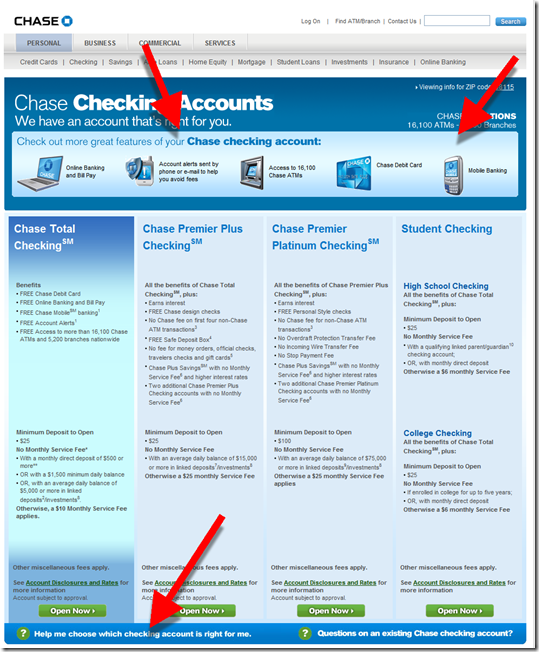
In this article, we'll discuss why Chase is the best bank for college students. We'll also talk about PNC's cash-back checking account of 1% and Wells Fargo high-yield savings account. These banks have many advantages and benefits. It is up to you to choose the right one for you, based on your financial history and individual needs. Before we dive into which bank is best for college students, let us review the key features of checking accounts.
Chase is the top bank for college students
Chase is the most popular bank for college students because it has numerous branches all across the country. It also offers students a free checking account with no monthly fees. The account can either be opened online or via an app on your mobile device. For those looking for a credit card, Chase doesn't have a specific student credit card, but its Freedom credit card is listed in Money Under 30's list of "Best Credit Cards For Young Adults With Good Credit."

Chase is the best bank for college students, despite many banks focusing on young people. Chase freedom student credit is free of the monthly service charge and allows you to split the fees with other friends. Chase also offers a student account that is free of charge if you plan to travel extensively. This account is great for students who are looking to build credit while at college.
PNC offers 1% cashback on checking accounts
Consider opening a PNC cash rewards checking account if you are still a student. The account earns 1% cashback on all purchases. You can either redeem the money for statement credit or deposit it in another PNC bank accounts. An account must be opened by someone who has at least $25. While the $8,000 limit is disappointing, it could not be a problem for those who spend lots of money.
PNC checking accounts offer many additional benefits. PNC waives monthly service fees for students who enroll within the first six years. You can also get a refund for your first overdraft. However, opening a single account may be a challenge. PNC offers three checking options and it is difficult to manage more than one.
Wells Fargo offers a high-yield savings account
A high-yield savings accounts pays a higher rate, which is one of the best aspects. The national average savings account rate is 0.07%. A high-yield savings savings account will pay more than twice that. Banks that offer this account tend to be large brick-and-mortar institutions and offer competitive rates. The account is charged interest on a monthly basis or quarterly and it is compounded over time.

A Wells Fargo high yield savings account is a great way to make more money as a student. Your money earns 0.01% annual percentage yield (APY), which means your account will have $1 in accumulated earnings over 10 years. Although you can upgrade to higher rates easily, it is worth noting that the current rate of 0.01% on your money is lower than the national average and much lower than the best online savings accounts.
FAQ
Should I buy individual stocks, or mutual funds?
Mutual funds can be a great way for diversifying your portfolio.
But they're not right for everyone.
For example, if you want to make quick profits, you shouldn't invest in them.
You should instead choose individual stocks.
Individual stocks offer greater control over investments.
Online index funds are also available at a low cost. These allow you to track different markets without paying high fees.
How long will it take to become financially self-sufficient?
It all depends on many factors. Some people are financially independent in a matter of days. Others take years to reach that goal. However, no matter how long it takes you to get there, there will come a time when you are financially free.
It's important to keep working towards this goal until you reach it.
Is it possible to earn passive income without starting a business?
It is. Many of the people who are successful today started as entrepreneurs. Many of them started businesses before they were famous.
To make passive income, however, you don’t have to open a business. You can instead create useful products and services that others find helpful.
Articles on subjects that you are interested in could be written, for instance. You can also write books. Consulting services could also be offered. It is only necessary that you provide value to others.
How can I manage my risk?
You must be aware of the possible losses that can result from investing.
A company might go bankrupt, which could cause stock prices to plummet.
Or, a country may collapse and its currency could fall.
You risk losing your entire investment in stocks
Stocks are subject to greater risk than bonds.
Buy both bonds and stocks to lower your risk.
This will increase your chances of making money with both assets.
Spreading your investments over multiple asset classes is another way to reduce risk.
Each class comes with its own set risks and rewards.
Bonds, on the other hand, are safer than stocks.
So, if you are interested in building wealth through stocks, you might want to invest in growth companies.
You may want to consider income-producing securities, such as bonds, if saving for retirement is something you are serious about.
What are the 4 types?
The four main types of investment are debt, equity, real estate, and cash.
You are required to repay debts at a later point. It is usually used as a way to finance large projects such as building houses, factories, etc. Equity is the right to buy shares in a company. Real estate is when you own land and buildings. Cash is what you have now.
When you invest in stocks, bonds, mutual funds, or other securities, you become part owner of the business. You share in the losses and profits.
Statistics
- An important note to remember is that a bond may only net you a 3% return on your money over multiple years. (ruleoneinvesting.com)
- Most banks offer CDs at a return of less than 2% per year, which is not even enough to keep up with inflation. (ruleoneinvesting.com)
- Some traders typically risk 2-5% of their capital based on any particular trade. (investopedia.com)
- Over time, the index has returned about 10 percent annually. (bankrate.com)
External Links
How To
How to invest stocks
Investing has become a very popular way to make a living. It is also considered one of the best ways to make passive income without working too hard. As long as you have some capital to start investing, there are many opportunities out there. It is up to you to know where to look, and what to do. The following article will teach you how to invest in the stock market.
Stocks are shares of ownership of companies. There are two types if stocks: preferred stocks and common stocks. Prefer stocks are private stocks, and common stocks can be traded on the stock exchange. The stock exchange allows public companies to trade their shares. They are valued based on the company's current earnings and future prospects. Stocks are bought by investors to make profits. This process is known as speculation.
There are three main steps involved in buying stocks. First, decide whether you want individual stocks to be bought or mutual funds. Second, choose the type of investment vehicle. The third step is to decide how much money you want to invest.
Choose Whether to Buy Individual Stocks or Mutual Funds
For those just starting out, mutual funds are a good option. These are professionally managed portfolios that contain several stocks. Consider the risk that you are willing and able to take in order to choose mutual funds. Certain mutual funds are more risky than others. For those who are just starting out with investing, it is a good idea to invest in low-risk funds to get familiarized with the market.
If you prefer to make individual investments, you should research the companies you intend to invest in. You should check the price of any stock before buying it. You do not want to buy stock that is lower than it is now only for it to rise in the future.
Select your Investment Vehicle
After you have decided on whether you want to invest in individual stocks or mutual funds you will need to choose an investment vehicle. An investment vehicle is simply another way to manage your money. For example, you could put your money into a bank account and pay monthly interest. You can also set up a brokerage account so that you can sell individual stocks.
A self-directed IRA (Individual retirement account) can be set up, which allows you direct stock investments. The self-directed IRA is similar to 401ks except you have control over how much you contribute.
The best investment vehicle for you depends on your specific needs. Are you looking to diversify, or are you more focused on a few stocks? Are you seeking stability or growth? How comfortable are you with managing your own finances?
All investors should have access information about their accounts, according to the IRS. To learn more about this requirement, visit www.irs.gov/investor/pubs/instructionsforindividualinvestors/index.html#id235800.
Determine How Much Money Should Be Invested
You will first need to decide how much of your income you want for investments. You can either set aside 5 percent or 100 percent of your income. Your goals will determine the amount you allocate.
If you are just starting to save for retirement, it may be uncomfortable to invest too much. If you plan to retire in five years, 50 percent of your income could be committed to investments.
It's important to remember that the amount of money you invest will affect your returns. So, before deciding what percentage of your income to devote to investments, think carefully about your long-term financial plans.